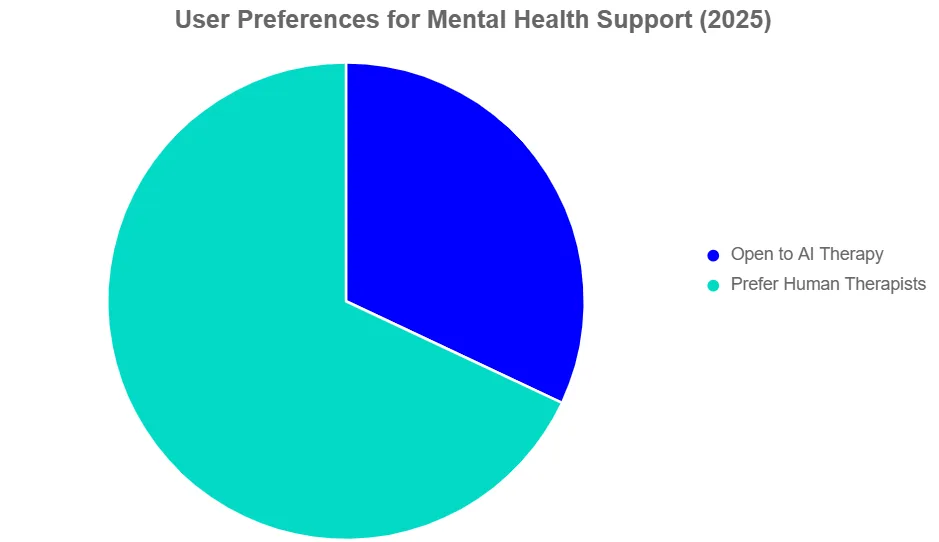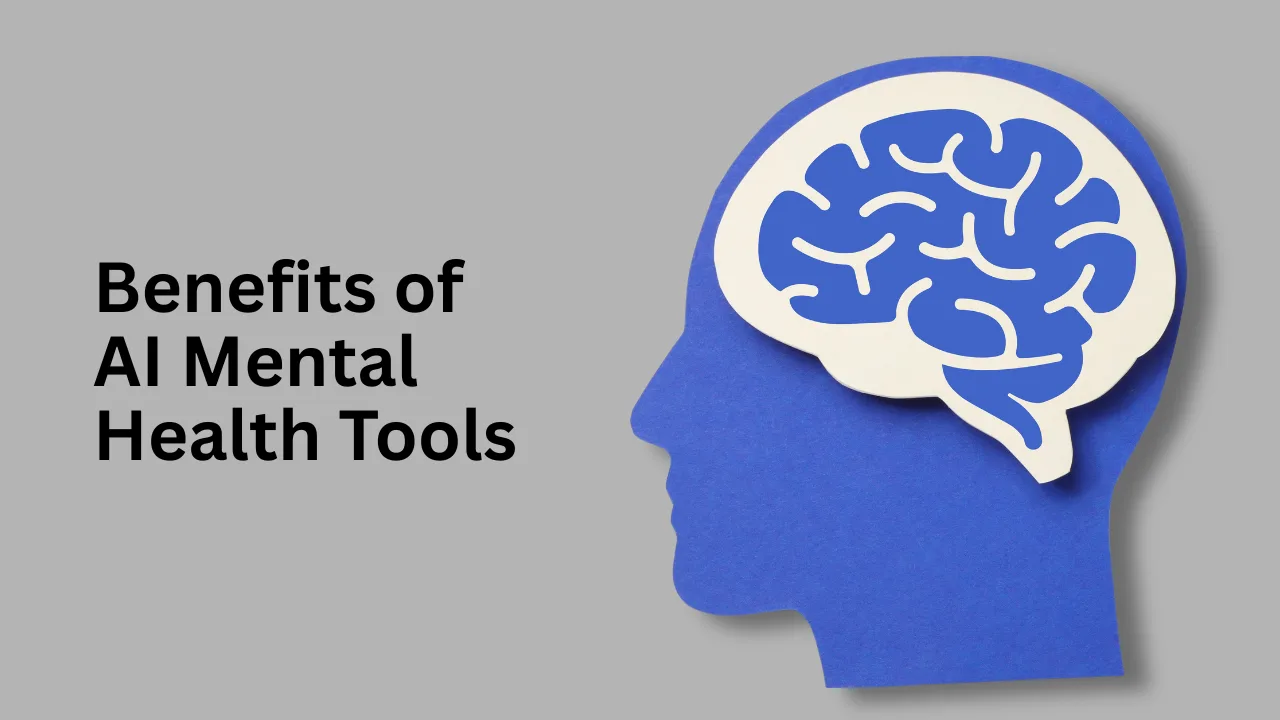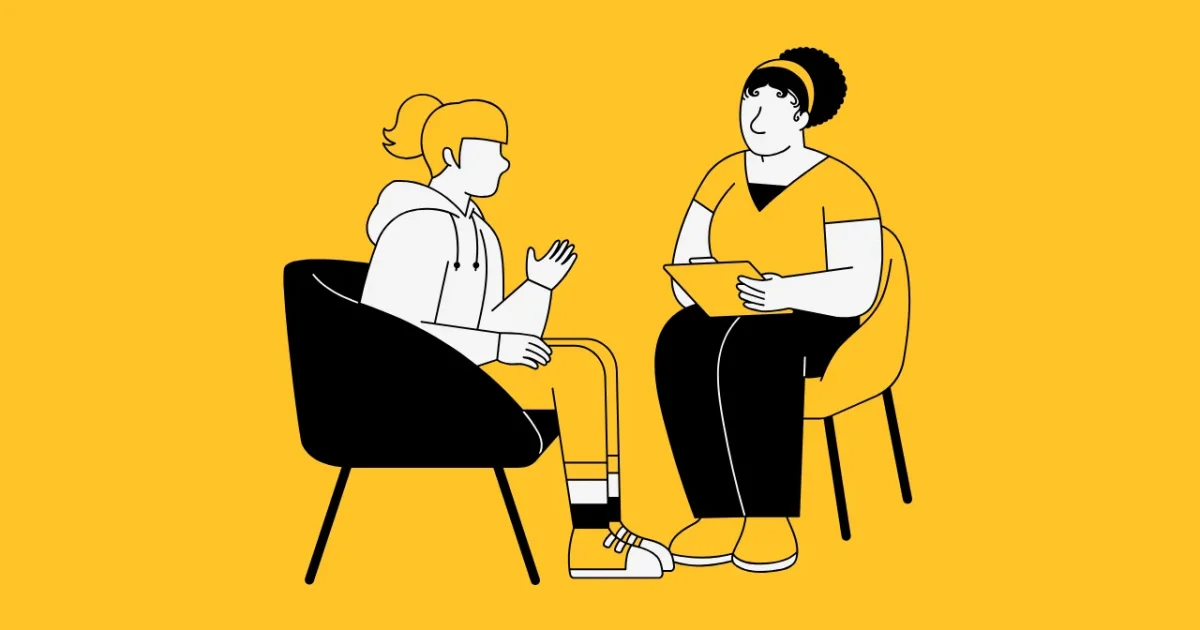Hey there! Imagine you’re feeling a bit down or worried, and you want to talk to someone. But therapy costs a ton, what if friends judge you, or there’s no help nearby? That’s the tough spot many kids and teens face when thinking about mental health for the first time. These barriers make it hard to get the support you need. As am the AI Tool Strategist at aitooljournal.com, I’ve seen Benefits of AI mental health tools can break down those walls. They’re like a friendly robot buddy who’s always ready to chat.
What Are AI Mental Health Tools?
Think of AI mental health tools like a smart phone app that’s part trainer, part listener. It’s powered by artificial intelligence – basically, a computer brain that learns from tons of talks to give helpful advice. Just like a video game character that gets smarter as you play, these tools use chats to spot moods and suggest calm-down tricks.
For example, say you tell the app, “I’m stressed about school.” It might reply with breathing exercises, like a coach guiding you through a tough level. Tools like Wysa or Youper do this with fun stories and games. They’re not full doctors, but they’re a great first step.
“AI can absolutely help with mental health when used the right way, but it can’t replace therapy. It works best as a supplement or bridge to in-person care.” – Dr. Adam Werntz, clinical psychologist.
Boosting AI Therapy Accessibility
One huge win is how AI therapy accessibility opens doors. No more waiting weeks for an appointment. These tools live right in your pocket, ready anytime.
Picture this: You’re in a rural spot with no counselors nearby. An app like Wysa lets you chat instantly, just like texting a friend. This fixes the access gap where over half the world lacks good mental health help.
So, what’s the bottom line? AI makes support as easy as opening an app.
Unlocking Artificial Intelligence Mental Health Perks with Personalization
Artificial intelligence mental health perks shine in personalized therapy solutions. The AI learns your style – like a custom playlist on Spotify.
For instance, if anxiety hits before tests, it tailors tips like “Try this 2-minute doodle break.” Youper uses your chat history to build a plan just for you. This beats one-size-fits-all advice.
Think of it this way: It’s your own mental fitness coach, adapting workouts to your energy.
“AI chatbots can make therapy more accessible and less expensive, while improving interventions.” – American Psychological Association experts.
Making Cost-Effective AI Therapy a Reality
Worried about money? Cost-effective AI therapy is a game-changer. Most apps are free or super cheap, unlike pricey sessions.
Take Woebot – basic chats are free, premium just $9.99 a month. That’s like buying a few sodas but getting ongoing help. It saves cash while easing stress.
Here’s the deal: You get value without breaking the bank.
Easing Stigma Reduction Through 24/7 Support
Stigma – that fear of judgment – keeps many quiet. AI offers stigma reduction with private, 24/7 support. No awkward waits in offices.
Chat anytime, like whispering to a secret diary that talks back. Headspace’s AI guides meditations without anyone knowing. This builds courage to seek real help later.
So, start small and feel the relief.
“The future of AI is not about replacing humans, it’s about augmenting human capabilities – especially in care gaps.” – Sundar Pichai, Google CEO.
Driving Mental Health Equity and AI Mental Care Improvements
Finally, these tools push mental health equity. They reach everyone, from busy families to far-off places, improving AI mental care overall.
Stats show the market booming to $9.11 billion by 2032, meaning more innovations. It’s like sharing a big pie of help fairly.
A quick look at openness to AI therapy:

This chart shows room to grow, but AI is closing the gap.
Helping You Pick the Perfect AI Mental Health Tool
Need to choose? This table compares top picks to make it simple.
| Tool Name | Key Feature | Best For | Price | ROI | Cons/Issues |
|---|---|---|---|---|---|
| Wysa | AI Chatbot with CBT Exercises | Daily Anxiety Check-Ins | Free; Premium $4.99/mo | High – Quick mood boosts save therapy costs | Limited deep crisis handling |
| Youper | Personalized Mood Tracking | Building Custom Plans | Free; Pro $9.99/mo | Medium – Long-term insights build habits | App glitches on old phones |
| Woebot | 24/7 Conversational Therapy | First-Time Users | Free; Unlimited $39/mo | High – Affordable entry to support | Feels robotic at times |
| Headspace | AI-Guided Meditations | Stress Relief | Free; Annual $69.99 | Medium – Better sleep equals better days | Less chat-focused |
Your Step-by-Step Guide to Trying an AI Mental Health Tool
Ready to dive in? Follow these easy steps.
- Pick an app like Wysa from the app store – search “AI therapy.”
- Sign up with just your email; no big details needed.
- Start a chat: Say, “I feel overwhelmed with homework.” Watch it respond.
- Try one tip daily, like a breathing game.
- Track how you feel after a week – journal it!
- If it helps, chat with a trusted adult about next steps.
Pro tip: Set a 10-minute timer to keep it fun.
For a hands-on example, Below code a simple JavaScript code snippet to build your own basic mood logger. Paste it into an HTML file and open in a browser – it’s like a mini AI starter!
<!DOCTYPE html>
<html>
<head>
<title>Mood Logger</title>
</head>
<body>
<h2>How do you feel today?</h2>
<input type="text" id="moodInput" placeholder="e.g., happy, sad">
<button onclick="logMood()">Log It!</button>
<p id="response"></p>
<script>
function logMood() {
let mood = document.getElementById('moodInput').value;
let tips = {
'sad': 'Try a walk outside – sunshine helps!',
'anxious': 'Breathe in for 4, out for 4. You got this.',
'happy': 'Great! Share it with a friend.'
};
let tip = tips[mood.toLowerCase()] || 'Keep going – tomorrow’s new.';
document.getElementById('response').innerText = tip;
}
</script>
</body>
</html>
How do you feel today?
This code grabs your mood and gives a quick tip. Tweak it to feel like your own tool!
Author’s Note: As someone who’s guided hundreds through AI picks, I once heard from a 13-year-old user: “ChatGPT helped my anxiety when therapy wait was too long – it was my first safe talk, and now I’m braver.” Stories like hers show AI as that gentle push.
Is an AI Mental Health Tool Right for You? Quick Self-Assessment
Print this checklist or jot notes. Answer yes/no.
- Do costs or waits stop you from seeking help?
- Would private chats ease judgment fears?
- Do you want tips anytime, day or night?
- Is personalization key for your busy life?
- Ready for a fun, low-pressure start?
Three or more yeses? Give it a go! Download a full PDF version here for easy sharing.
Wrapping Up: Step Into Smarter Support
The benefits of AI mental health tools aren’t just buzz – they’re real fixes for access, cost, and shame in 2025. From 24/7 chats to fairer care, they’re your bridge to feeling better. Remember, AI augments human strength; pair it with real talks when ready.
What’s next? Try one today and see the spark.
FAQs
How do AI mental health tools handle privacy?
They use strong encryption, like a locked diary. Always check app policies, but top ones like Wysa keep chats safe.
Can kids under 13 use these tools?
Many are for 13+, but with parent okay. Start with family-friendly ones like Headspace for guided calm.
Is AI therapy as good as a real therapist?
It’s a great helper, not a swap. Use it to build skills, then see pros for deeper stuff.
What if the app gives bad advice?
Flag it and switch tools. They’re improving fast, but trust your gut – seek human help in crises.
How has AI changed mental health in 2025?
Adoption’s up, with tools cutting wait times and boosting engagement by 30% in studies.
Loved this? Swing by our post on AI Mental Health Tools Guide: 5 Powerful Ways to Feel Better to see how AI eases stress too. Or drop a comment: What’s your first AI tool try? Share below!




